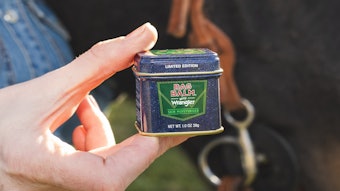Cosmetic scientists strive to devise different ways to build unique products, and although traditional materials and processing techniques are often leveraged to provide a range of product endpoints, new combinations and emulsion starting points are gaining momentum. As technologies advance, the selection of formulating tools broadens; one popular avenue has been the development of emulsions using cold-process materials and techniques. Though this approach has many advantages over traditional emulsifiers, there are specific aspects with it the cosmetic scientist must consider.
Benefits of Cold Processing
Why the tremendous interest in cold-processable emulsifiers and blends? In the most basic sense, who wouldn’t want to finish work faster and skip unnecessary steps? Cold emulsification offers such benefits since, unlike traditional emulsification, it does not involve heating water and oil phases to temperatures as high as 80-90°C for emulsification droplet formation. Consequently, it also avoids long cooling processes, especially considering batches are typically cooled at one-third or one-half a Celsius degree per minute. This translates into substantial energy and overall cost savings for production. In turn, less energy consumption means fewer CO2 emissions, reducing the impact on the environment and aligning with the current trend for a reduced carbon footprint.
From a bench formulation standpoint, the entire process also becomes easier and more flexible. Sensitive ingredients can be combined earlier, and the initial viscosity can be met quicker, allowing more time for adjustments to be made to viscosity and color. Batches can also be split to easily post-add oils, esters, polymers and silicones to test a variety of formula variations.
Many formulation excipients and methods have been developed with the goal of processing emulsions without the use of heat, and this article will look at the classes that have evolved over the years as well as identify some of the main issues formulators face.
Cold Processing Limits
As with all new technologies, there are certain pitfalls of which formulators must first be aware. Though cold processing has many advantages, it does limit the types of oils and waxes a formulator can use, which can affect the final feel and design of the product. Often employed for skin care formulations, cold emulsification is less often used for color formulations, which involve high temperatures, hot melting and hot-pouring processes.
Further, when using cold processing, formulators must ensure that the emulsifier and non-liquid materials are completely dissolved and dispersed in the emulsion; whereas heating would have ensured the melting of all waxes and emulsifiers, cold processing depends on the spontaneous ability of materials to solubilize into the proper phase and interfacial area of an emulsion droplet. In relation, there is also concern for the micro-integrity of the formulation. Finally, in processes void of heat, there is no room for error when it comes to using clean, non-contaminated materials; heating the water and oil phases typically neutralizes any contaminants in the raw materials.
Ingredient Compatibilities
Since cold-process formulas do not incorporate high-melting-point waxes, which provide structure to formulations, the formulator must be sure to select rheology modifiers that are compatible with the system. Carbomers, polysaccharide gums and other polymers should be carefully evaluated. Also, the use of secondary viscosity modifiers should be controlled.
One of the basic requirements of any emulsion system, including those that are cold processable, is the ability to form and maintain well-dispersed, stable droplets. Besides emulsifying water, other polar-based materials that readily dissolve in water, at least to some extent, also must be considered; and as with the water phase, the oil phase should consist of oils, waxes and non-polar materials that are generally soluble in oils. Combining two phases without the use of traditional emulsifiers or heating processes involves unique materials and technologies that must readily work. Thus, emulsifiers in a cold-processing system should be liquid or readily soluble in either the aqueous or oil phase of the composition.
Ingredient Choices
Although new materials are being invented each year, most cold-process emulsifiers fall into some general categories.
O/W emulsions: For o/w emulsions, emulsifiers are based either on polymer chemistry, silicone chemistry (especially in w/s foundations), or contain alkoxylated alcohols and phosphorous compounds. Most emulsifying systems work by reducing surface tension, but it is also possible to make stable emulsions using polymers that suspend and hold the internal phase droplets. Oils can be trapped in gel pores to develop highly stable emulsions. Polymer materials also have been developed using acrylate chemistry, as well as natural polysaccharides. As noted, generally, cold-process formulas would not include waxes that have high melting points.
W/O emulsions: When it comes to w/o formulas, cold-process emulsions generally use polyglyceryl-derived esters. Some examples are polyglyceryl-2 diisostearate and polyglyceryl-3 polyricinoleate. Many w/s emulsifiers also use polyethylene glycol (PEG) crosspolymers that cross-link the backbone in solvents, such as silicone and isododecane.
Pre-blend Options
Many pre-blended emulsion concentrates have been developed to formulate without the need for heat. These consist of mixtures of emulsifiers, waxes and oils; some also contain water. Many include fatty alcohols, ethoxylated emulsifiers, and oils or silicones. The phase inversion temperature (PIT) approach is commonly used to develop these pre-blended emulsions, as it allows for the use of solid high-melting waxes in a liquid emulsion concentrate.
Blended polymers that assist in cold-process formulations utilize cationic and anionic forms of acrylate or polyacrylate polymers in pre-dispersed esters or oils. When using these blends, the formulator can add the aqueous phase to the concentrate; they also enable the ability to emulsify more oils to modify texture. Most of these blends are acrylate-based that come in pre-neutralized forms and behave fairly well in formulas consisting of electrolytes.
Finally, sodium polyacrylate combinations have been blended with natural waxes, polyethylene or other synthetic ingredients. The use of these non-polar wax blends with polar-emulsifying electrolytes requires high shear to dissociate them in water.
The key to using many of these pre-blended and combined materials is to mix them with a portion of the water phase first, allowing for a more viscous mixture into which the particles can then be mixed to break them apart. As the particles disperse and develop structure, mixing can be slowed as the rest of the water and oil phases are added.
High Energy Dispersion
High energy dispersion is another process that employs high shear force and compounding under controlled temperatures and mixing in order to render micro-fine, mono-modal particles (or constructs) of a hydrophobic nature throughout a continuous aqueous phase. This technology enables the combination of typically incompatible hydrophilic and hydrophobic molecules. The end result yields a product that is extremely stable, even in the absence of traditional emulsifiers or surfactants. The process also can accommodate a variety of mixtures of hydrophobic materials such as oils, waxes, butters and silicones.
To the formulating chemist, high energy dispersion products can be added to new formulations or used alone with the addition of thickeners and fragrance, as desired. One key advantage is their controlled particle size distribution. This greatly enhances the product’s surface coverage, which can improve the application of formulations such as liquid makeup, e.g., BB creams, or sunscreens.
From a physical perspective, high energy dispersions offer the advantage of improved product aesthetics and can be applied to a wide array of formulation types, ranging from creams, lotions and cleansers, to sunscreens, shampoos, spray moisturizers, etc. Additionally, high energy dispersions, being free of traditional surfactants and emulsifiers, are amenable for use in sensitive skin product applications. However, due to the nature of these dispersions and their high density constructs, they impart significant light diffraction, which requires careful consideration and formulation prowess when applying them to clear products.
Smarter Products
Considering the number of options available, in the end, it is most crucial for the combined system to provide long-term stability. And although the described pre-blends and combined dispersions can provide the basis for great products, a formulator might find that a cross-linked silicone emulsifier or anionic surfactant helps their system. Even the most well-known and basic nonionic emulsifiers can be the basis for a cold-process emulsion.
The advantages of cold-process formulation are being realized by both the cosmetic scientist and process engineers for commercial scale manufacturing. With this new technology and method, cosmetic scientists will find easier ways to match their targeted textures and manufacture smarter products for the marketplace.










